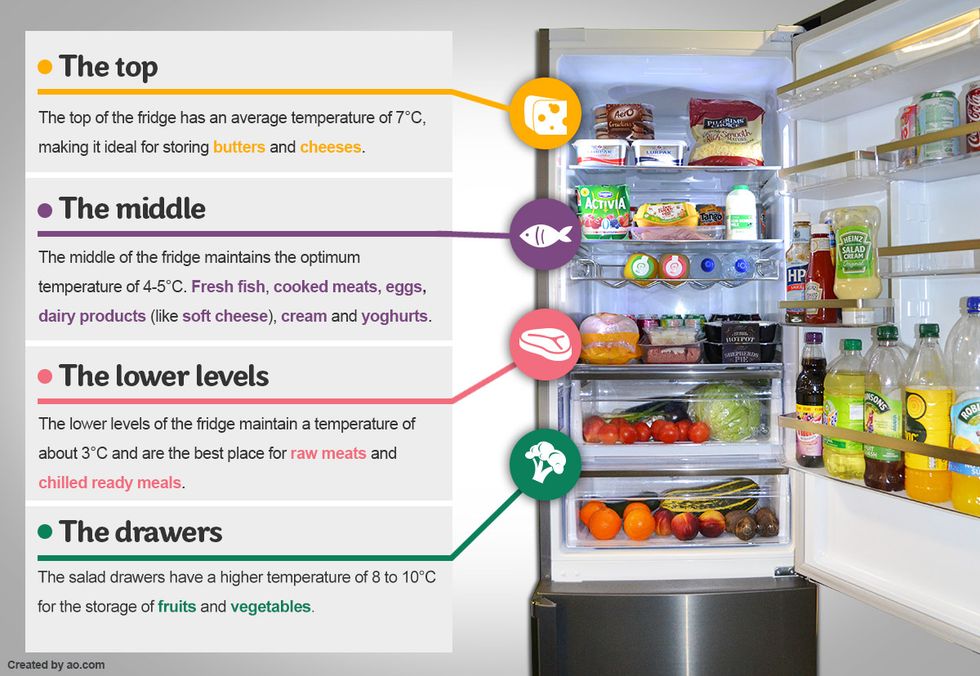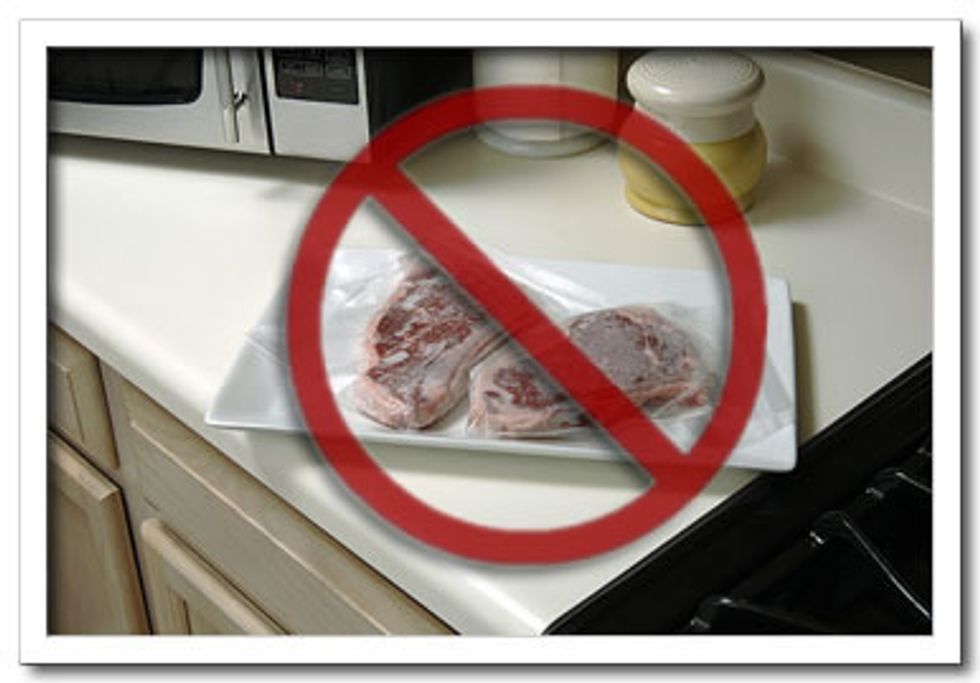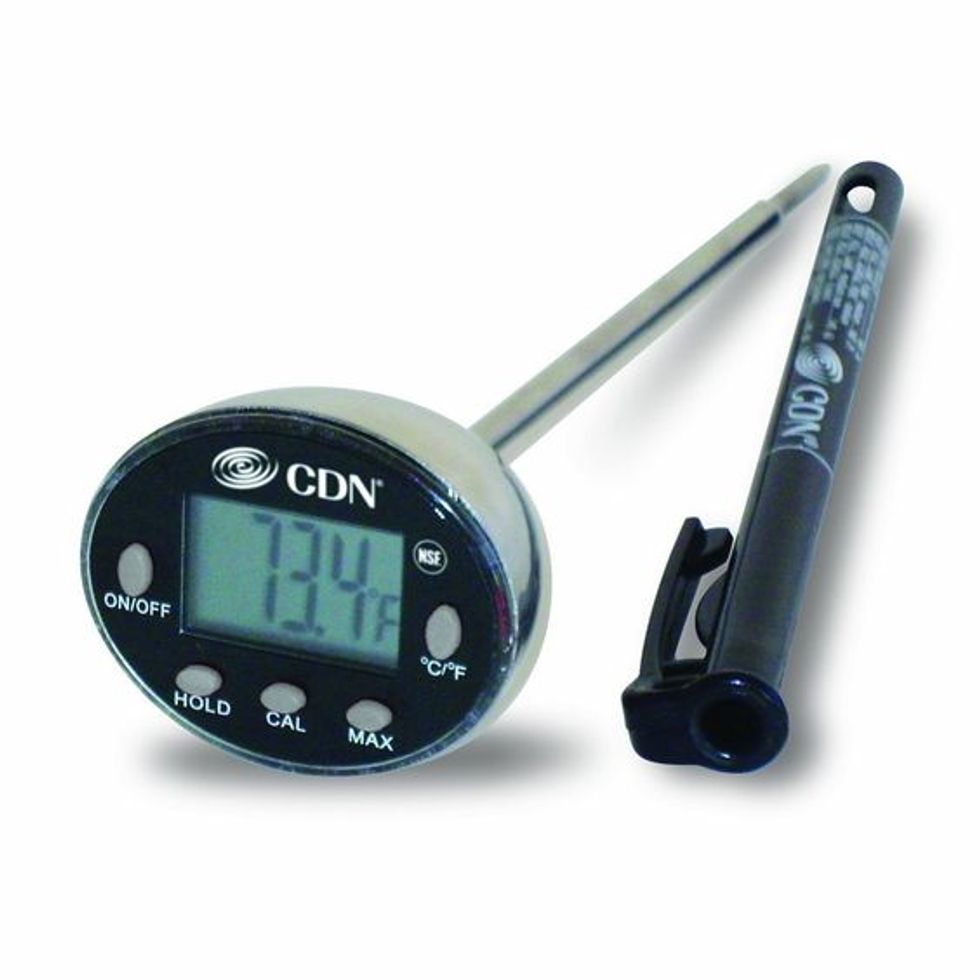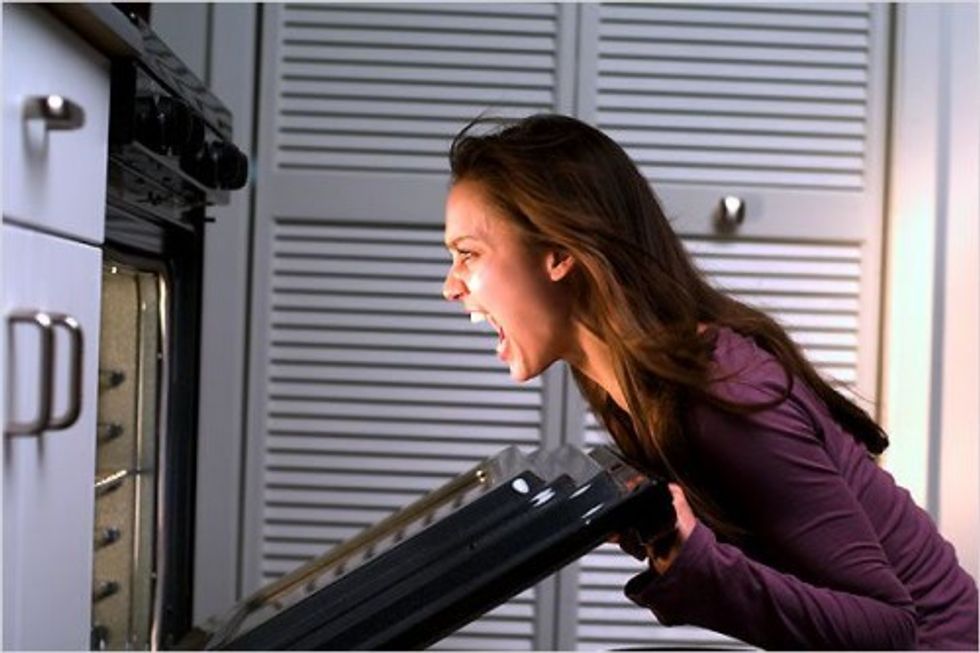Thanksgiving is almost here!! Which means Christmas is almost here!!
I'm getting ahead of myself. Before the actual day is preparation for the family meals, which is one of my favorite parts of the holiday season. I relish being able to reunite with family members I don't get to see very often, everyone bringing a little something to share and enjoy together in each other's presence.
Everybody's all huddled up indoors from the cold, watching parades or holiday movies, there's a warm scented candle burning in the background, I just love it. However, one of the stresses of the season can be the preparing of the food, dealing with recipes when they don't turn out like you expected, and if you have thought about this before (maybe you haven't but should), the safety of the dish.
Luckily, I think my family is pretty good about not getting each other sick. (Not to mention how delicious everything is, but that could be an entirely separate article or three…) However, I'm sure everybody at one time or another has looked at their dish, questioned the amount of time this one ingredient was out of the fridge, or the temperature of the oven, and nervously assured his or her self, "I'm sure it's fine…" You've survived so far, so that's good.
However, especially for certain members of the family, food safety is a lot more important and could mean more than just an upset stomach if your assumptions are wrong.
I'll confess, I might be minimally helpful when it comes to keeping your turkey from doing whatever it did in "A Christmas Story," from making your turkey explode whilst frying, or even grilling.
But what I can be of some benefit in is some facts about food safety! Here's your how-to guide to confidently bring a safe and tasty dish to the holiday table.
1. Buying the meat / food.
Serving safe food starts with buying safe food. Poultry includes your chicken, duck, and of course, the turkey! When you're buying, it's normal to see white, pink, or even red. However, if the tips of the wing are dark, or if you see any purple or greenish tints (such as around the neck), choose a different one.
When you're going to prepare it, or if you can tell beforehand, if there is any kind of stickiness around the joints or wings, it's probably not safe. You want it to be pretty firm to the touch, and there shouldn't be any odor.
If you're using meat such as beef, pork, or lamb, you also want it to be firm and without odor, and you want the packaging to be clean. Don't pick the ones with stuff on the outside. Beef should be a bright red color, slightly darker if it is aged, and it may have a slight purple tint if it is in a vacuum-sealed container.
You don't want to see any brown or green. Pork should be a light pink color (and the fat should be firm and white). If the fat is soft or the meat is really dark, pick a different one. Lamb should be a light red color, and you want to watch out for the ones with a brown or white tint to the surface of the lean meat.
Eggs should be clean and free of cracks, dairy products should be purchased within the sell-by date, and produce should be free of any mold, bugs, cuts, or discolorations.
If you can find the thermometer in the freezer display, refrigerated items should be at 41 degrees or lower. If you notice the thermometer above 41 degrees, it might not be a bad idea to try another store.
2. Storing the meat / food.
Once you purchase your foods, the main thing is keeping your refrigerated or frozen items at 41 degrees or lower. However, it's also important to store your foods a certain way. Case in point: you don't want to thaw your turkey in the refrigerator above your banana pudding because you don't want salmonella juice in your pudding. Disgusting, I know. That's my point.
The order is based on what's going to have a chance to be cooked past the danger point if there is anything in it. You want the things that are: ready to eat (a.k.a. that banana pudding, or potato salad) at the top.
Below that, you want any (seafood if you have it, and then) whole cuts of meat (such as beef, pork, or lamb). Below that, any ground meat or fish (excluding ground turkey), and at the bottom, your whole or ground poultry.
Of course, unless you're preparing potato salad AND fish AND steak AND hamburgers AND turkey, you won't need five separate shelves for your food. If you've just got that banana pudding and the turkey in your fridge, if your bottom shelf is the third shelf, it should be fine.
Additionally, if you have vegetable crispers in the bottom of your fridge, that should be fine at the bottom, because it is enclosed. What you don't want is raw steaks defrosting over your cheese plate, or your raw turkey above your banana pudding. Your milk, sour cream, and other packaged goods should be fine wherever.
Avoid packing your fridge TOO full (I know, it's hard this time of year.) But, if you can toss out any old stuff, leaving more room means leaving more space for the cooling air to get to the food items.
3. Keeping it clean (hands, equipment).
Before you do any of your preparations, wash your hands! Use soap and warm water, sing "Happy Birthday," scrub under your nails, the whole nine yards. Use clean dishes and equipment too. If you hand-wash, use fresh soap and water as hot as you can stand it.
If you're feeling sick, now is not the day to make that chicken salad. Especially if you're having a skin bacterial infection or gastrointestinal issues (nausea, vomiting, diarrhea, I know, it's gross; that's my point) let someone else fix the dish.
Cover any cuts or wounds very well with a clean bandage, and if you have disposable gloves, use those.
Wash your hands whenever you're working with a new food item. Need to take out the trash? Wash your hands before you come back. Switching from eggs to milk? Wash them again. Turkey to salad? Same thing. Need to scratch an itch? Another good time to probably wash your hands.
4. Preparing the food.
Namely, thawing food. What's the best way? There are really four ways that are safe for thawing food. They do not include letting the meat sit in still water in the sink. They do not include thawing it on the counter. They are:
1. Thawing in the refrigerator. (This can sometimes take up to 24 hours, possibly a little longer, so plan accordingly.)
2. Thawing under cold, running water. (Get it thawed and cooking within four hours.)
3. Thawing in the microwave.
4. Thawing by cooking. (a.k.a. throwing the cold product straight into the oven, pan, whatever)
There is one exception - and that's when you're letting a frozen turkey (or whatever food) thaw gradually for deep-frying purposes. In that case, you don't want the food item to get above 41 degrees. Monitor it, and once your food gets thawed and around 41 degrees, it is time to cook.
That's about it. Maybe you typically thaw foods another way, but it's really not the safest. Still or warm water, or letting it sit on the counter, puts your food at risk of being at a temperature where microbes can grow for long enough that it could be dangerous. Between 41 and 135 degrees in particular, bacteria thrive. The goal is to get it through that zone as quickly as possible; thus, the methods listed above.
5. Keeping it separate (cutting boards).
This may be self-explanatory, but you may want to keep the raw turkey away from the salad. And definitely, don't share your cutting boards. Wash it if you have to, but use separate surfaces.
6. Cooking it properly.
Ah, the biggest question. 450 degrees for 3 hours, 350 for 4 hours, till it's golden brown, "is it okay if it's this color?" just how do you know if the turkey is not going to make you sick? For this, it's all up to the internal temperature, then it's just gravy from there. (You can cook it however much longer you want, this is just the minimum to make sure it's safe.) To start your food safety assurance, get yourself a food thermometer.
There's the bimetallic stemmed thermometer, the probe thermometer, and here's a dandy (NSF-certified!) example available on Amazon:
Most of your testing is going to require you sticking the thermometer into the deepest part of the dish. You can bake whatever it is at 400 degrees, and if the surface gets to 400 degrees but the inside never gets past 120, your food is not safe. You want to stick your thermometer in there during cooking, and to see it well above whatever the specific temp requirement is for that food. For instance - say you're testing your turkey after four hours.
If the deepest part reads 160, keep cooking it. If it reads 165 for about a second or two, then goes back to 163, keep cooking. If your inside is around 170 or higher and it's staying there for 15 seconds, you're golden.
For your baked beans, your mashed potatoes, your green beans, your mac and cheese, whatever plant-based goodies you serve hot, your magic number is 135 degrees Fahrenheit for 15 seconds.
If you're cooking whole cuts of meat, such as a pork loin or steaks, or seafood, the magic number is 145 degrees for at least 15 seconds.
Ground meats (a.k.a. ground beef), any injected meats, and eggs need to reach at least 155 for 15 seconds.
Any kind of poultry, ground or whole, needs to be at 165 for 15 seconds.
Anything with any kind of poultry in it needs to reach 165 for at least 15 seconds. (I'm talking to you, dressing and gravies.)
In addition, if you are REHEATING anything (a.k.a. you made that casserole last night and are reheating it for the meal) it needs to reach 165 for 15 seconds. Reheated green beans need to reach 165. Even the meats you only have to cook to 145? If you're not eating them immediately, the reheat temp needs to reach 165. For 15 seconds.
7. Storing it properly.
This might actually be the biggest foodborne danger on holidays. You eat lunch, and you just kind of leave everything out for people to graze on throughout the day. Here's the thing - foods can stay out without temperature control - but only up to four hours. If you're not going to throw it out after four hours, you need to either keep it in the oven so that everything stays above 135, or put it back in the fridge, and reheat leftovers to at least 165.
It may even be a good idea to keep items (in acceptable pans or dishes) on a stove top or in a slow cooker, keeping the item above 135 degrees while everyone is serving themselves. Then, be prompt about getting it in temperature control (such as the refrigerator) as soon as possible.
The goal is not to get the food into the refrigerator within four hours - it is to get it below 41 degrees within four hours, so if you do not intend to throw out the food after four hours, you'll want to get it in the fridge in plenty of time.
8. Preparing for "oh-good-gravy" moments.
Stuff happens. What do you do when you forget to turn the oven on, or you forget to put the food in the fridge? If it is within the four hour range, you want to get the food out of the "temperature danger zone" within that four hour period. It's been three hours since you took the item out of the fridge and thought you started to cook it?
The deepest part of the food will need to be at its designated minimum temperature within an hour. If you don't think the whole turkey will be roasted in time, the safest thing to do would be cutting the turkey up into smaller pieces, and maybe cooking it at a higher temperature.
One strategy for foods you planned to refrigerate could be keeping a spoon in the freezer. If you have less than an hour to get the banana pudding that was sitting out back under 41 degrees, try stirring the pudding with the cold spoon, and then sticking it in the refrigerator or freezer. Check within the hour to make sure it has gotten back under 41 degrees.
If it has been over four hours, and the item is still within that "temperature danger zone" of 41 to 135 degrees, you're really supposed to throw it out. Maybe you're feeling risky and want to eat it anyways, but individuals that are most at-risk (examples below) should probably not chance it on those foods.
9. Most hazardous foods.
Which foods are we worried about? There are the obvious ones, like meats. There's the obvious safe ones, like crackers. But there may be some foods that you didn't know are at increased risk of causing foodborne illness.
Raw meats like beef, chicken or poultry, and eggs can often cause problems, especially if they are undercooked.
Dishes like rice, cooked vegetables, stews, and gravies can easily harbor bacteria, especially if they are held incorrectly (i.e. left to sit out for too long).
Baked potatoes can be a hazard. While covering most foods helps prevent bacterial growth, there is an anaerobic strain of bacteria (one that thrives without oxygen) that can manifest itself in temperature-abused, wrapped baked potatoes.
Ready-to-eat foods and salads made by hand (such as potato salad, macaroni salad, tuna salad, chicken salad, etc.) are at risk of harboring bacteria, and do not get cooked to reduce bacteria. The biggest risk with these foods comes from bacteria on hands or from flies.
Produce, particularly those cut (especially tomatoes, cantaloupes, peppers, and lettuce) can foster bacteria from the surface or from the hands preparing it.
Remember the Blue Bell shebacle from a few years ago? Some bacteria can actually thrive in cold environments, including hot dogs, deli meats, and dairy products like cheese (and ice cream obviously). This is listeria monocytogenes, and while most of the above just cause gastrointestinal symptoms, listeria can cause miscarriage in pregnant women, as well as several other more serious conditions. For this reason, at-risk populations are often encouraged to heat up their deli meats before consuming.
Seafood is not very common at holiday meals, but for those who do enjoy it this time of year, it can be a little trickier to avoid these complications.
Risks associated with seafood are not so much a matter of sufficient cooking, because they are most associated with toxins, which often have much more serious symptoms, affecting the nervous system. Make sure you buy your seafood from a reputable supplier who knows what kind of seafood to get from where, at which times of the year, etc.
10. Symptoms to watch.
The most common symptoms are nausea, vomiting, and diarrhea. Probably over half, if not most, of the foodborne illnesses involve nausea, vomiting, and diarrhea as symptoms.
Other symptoms can include headaches, abdominal cramps, fever, loss of appetite, rash, and weakness. Botulism caused by temperature-abused baked potatoes can cause double-vision and difficulty swallowing/speaking after a while; listeria can cause miscarriage, sepsis, pneumonia, and meningitis; and E. coli can cause kidney failure if it gets serious enough.
A lot of the symptoms are similar, and not all will be present, but knowing which symptoms you have may help you narrow down a possible cause of illness.
11. Most at-risk family members.
Please appreciate my corny fake names to help you remember.
Pregnant Cousin Clara - For listeria especially, foodborne illness is nothing to take lightly. In addition, the baby is still developing, so illnesses can be a lot more serious for pregnant women and their children.
Little Nephew Nate - Children's immune systems are not fully developed, as evidenced by how often kids can get sick. If there's a question about any of the food items served, the kids' plates in particular should probably avoid those items.
Great-Grandma Gladys - The elderly already may have conditions that put their body at extra stress, affecting its ability to fight infections, but they also produce less stomach acid, which makes it easier for bacteria to survive and cause problems. This is why it is particularly important for elderly individuals to make sure their food is safe.
Immuno-compromised Brother-in-Law Buster - Individuals of any age with AIDS, HIV, or any other condition affecting the immune system (such as undergoing chemotherapy) will be less able to fight off any pathogens. They too should take extra precautions to avoid foodborne illness.
So please, spread the word and not the germs with those you love (and others who may be preparing your food this season). Print this article and slip it in the envelope with your Christmas cards.
Subtly post it on that one relative's timeline whose cooking is always questionable. Keep you and your family safe and enjoy those meals without doubts about its safety!
Source: ServSafe Coursebook, 6th edition















 Photo by
Photo by 












